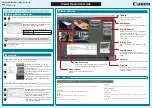
106
Chapter 9. Managing GFS
Note
For more information about
ctime
,
mtime
, and
atime
updates, refer to the
stat(2)
man page.
If
atime
updates are enabled as they are by default on GFS and other Linux file systems then every
time a file is read, its inode needs to be updated.
Because few applications use the information provided by
atime
, those updates can require a signifi-
cant amount of unnecessary write traffic and file-locking traffic. That traffic can degrade performance;
therefore, it may be preferable to turn off
atime
updates.
Two methods of reducing the effects of
atime
updating are available:
•
Mount with
noatime
•
Tune GFS
atime
quantum
9.9.1. Mount with
noatime
A standard Linux mount option,
noatime
, may be specified when the file system is mounted, which
disables
atime
updates on that file system.
9.9.1.1. Usage
mount -t gfs
BlockDevice MountPoint
-o noatime
BlockDevice
Specifies the block device where the GFS file system resides.
MountPoint
Specifies the directory where the GFS file system should be mounted.
9.9.1.2. Example
In this example, the GFS file system resides on the
pool0
block device and is mounted on directory
/gfs1/
with atime updates turned off.
mount -t gfs /dev/pool/pool0 /gfs1 -o noatime
9.9.2. Tune GFS
atime
Quantum
When
atime
updates are enabled, GFS (by default) only updates them once an hour. The time quan-
tum is a tunable parameter that can be adjusted using the
gfs_tool
command.
Each node in a GFS cluster updates the access time based on the difference between its system time
and the time recorded in the inode. It is required that system clocks of all nodes in a GFS cluster
be in sync. If a node’s system time is out of sync by a significant fraction of the tunable parameter,
atime_quantum
, then
atime
updates are written more frequently. Increasing the frequency of
atime
updates may cause performance degradation in clusters with heavy work loads.
Summary of Contents for GFS 6.0 -
Page 1: ...Red Hat GFS 6 0 Administrator s Guide...
Page 8: ......
Page 88: ...74 Chapter 6 Creating the Cluster Configuration System Files...
Page 98: ...84 Chapter 7 Using the Cluster Configuration System...
Page 102: ...88 Chapter 8 Using Clustering and Locking Systems...
Page 128: ...114 Chapter 9 Managing GFS...
Page 134: ...120 Chapter 10 Using the Fencing System...
Page 144: ...130 Chapter 12 Using GFS init d Scripts...
Page 148: ...134 Appendix A Using Red Hat GFS with Red Hat Cluster Suite...
Page 184: ...170 Appendix C Basic GFS Examples...
Page 190: ......
















































